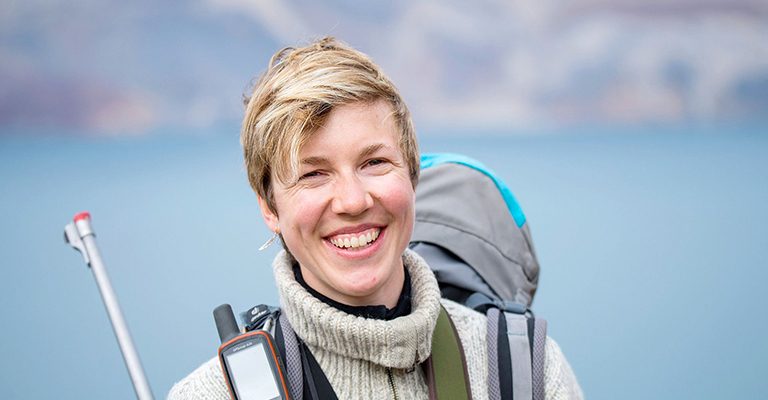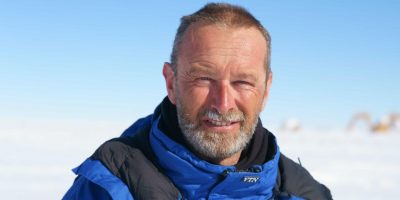By Laurie Henry
Heidi Sevestre, French glaciologist and member of the secretariat of AMAP, Arctic Monitoring and Assessment Programme, Working Group of the Arctic Council, devotes her life to science and to raising public awareness of climate issues. She is recognized worldwide for her involvement and her courage in frontline research, leading unprecedented expeditions. His goal today is to make scientific facts more accessible and inspire people to join the fight against the climate crisis.
A course in the glaciers
Heidi Sevestre grew up in the French Alps, forging a deep passion for mountains and glaciers. At 17, she took the path of glaciology. After a four-year thesis on the dynamics of glacial surges (very rapid advance of a glacier), she graduated from the University Center of Svalbard UNIS. A work that will appear on the cover of the scientific journal Science in December 2017.
Subsequently, she taught glaciology to masters and doctoral students at the Svalbard University Center in the Arctic. She became an international member of the Explorers Club, and led numerous polar and mountaineering expeditions from the Andes to the Himalayas. Today, she helps coordinate research on climate change in the Arctic, and communicates the results of this research to the governments of the Arctic Council with AMAP – Arctic Monitoring and Assessment Programme.
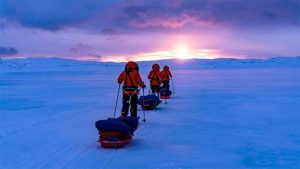
The 2021 expedition led by Heidi Sevestre in Svalbard © Climate Sentinels
Climate Sentinels, a carbon neutral expedition in 2021
In April 2021, Heidi leads a team of 6 female scientists and explorers – called the Climate Sentinels – on an expedition, with the aim of better understanding the drivers of Arctic change on the Norwegian archipelago of Svalbard.
The team skied 450 km of glaciers, fjords and snow-capped peaks, making this expedition the first carbon-neutral expedition to Svalbard. The scientific collection of samples on their journey somewhat weighed down the sleds they pulled. But this remained negligible compared to the weight of all their equipment (tents, sleeping bags, scientific tools).
Despite exceptional preparation, the team found themselves struggling with winds of more than 140 km/h and violent blizzards – exceptional conditions for the month of April. The 6 women had to bury themselves in the snow to protect themselves from an approaching storm while they were high up on a plateau. They also encountered 5 of the 3,000 polar bears in the region. Adaptation is a guarantee of survival in these hostile environments.
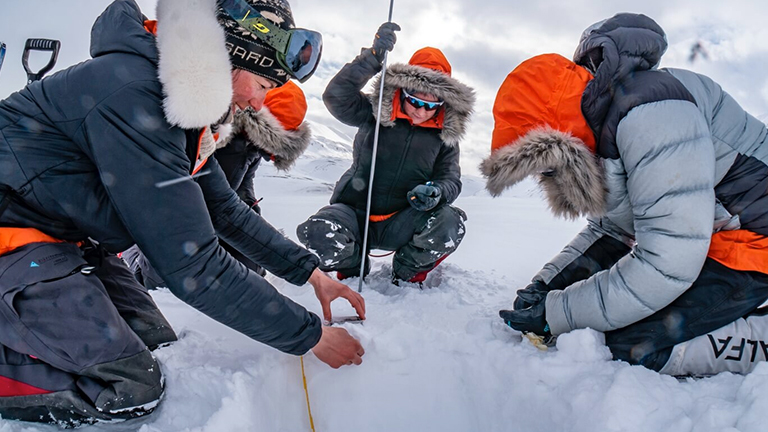
South of Svalbard, April 21, 2021: Heidi Sevestre, Nina Adjanin, Silje Smith-Johnsen, and Anne Elina Flink, three members of the Climate Sentinels expedition, take snow samples to measure the concentration of carbon black © Heidi Sevestre
The Arctic, a frontline witness to climate change
The Arctic Archipelago is warming six times faster than the rest of the world. In Longyearbyen, the city where the expedition was based, the impact of the retreat of the permafrost (perpetually frozen ground) is endangering the ancient coffins by erosion (today it is no longer possible to bury coffins in Svalbard). Indeed, the preservation due to permafrost ensures that the skeletons of the tombs retain soft tissues of skin, hair and brain matter, providing unique insight into living conditions in the region in the 16th and 17th centuries. In addition, residential areas are, for the first time in history, prone to avalanches. This last point is due in particular to the fact that temperatures are rising quickly, that the snow cover is loaded with humidity and is destabilized.
This is why to improve the understanding of the melting of the Arctic, the members of the expedition analyzed the black carbon. On the expedition site, Heidi Sevestre explains that black carbon is the result of the incomplete combustion of fossil fuels and biomass. Diesel and oil engines, coal factories or forest fires are among the biggest sources of black carbon. However, when fine particles are suspended in the air, they absorb solar radiation and modify cloud formation and precipitation rates. When dropped on the ground, especially on light-colored surfaces (snow and ice), carbon black melts them.
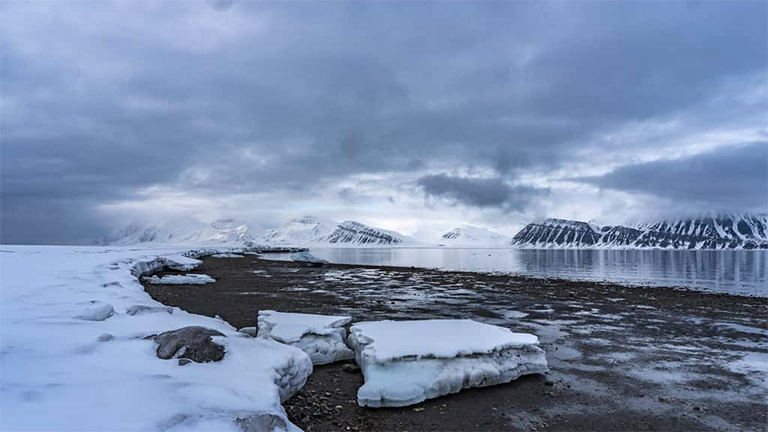
Illustration of global warming in Svalbard © Climate Sentinels
In an interview given to ABC News, Heidi Sevestre points out that about 40% of the melting of the Arctic today can be attributed to black carbon deposits.
“There is still time to prevent this from getting worse,” she adds, “but only if we start acting immediately… I have to remain optimistic. It is my duty. If we scientists, if people who are so passionate about the polar regions are giving up, why should people care about these regions? Why should people act? But it’s really now or never.”
Throughout this journey, team members have worked with classrooms around the world to make science accessible to younger generations, and to understand how these polar environments are responding to climate change and what is possible to do. She also shares the different stages of this expedition on a dedicated Youtube channel, and all of Heidi’s adventures are posted on her website.
A medal in 2022 to reward a life dedicated to science
In 2022, Heidi Sevestre became the winner of the first Shackleton Medal for the Protection of the Polar Regions. This award recognizes his exemplary scientific work, his achievements as an expedition leader in extreme environments, and his work as a founding member of Climate Sentinels. But this medal is above all a recognition of the work she has carried out for numerous awareness campaigns and documentaries, as well as for her work in scientific communication with geopolitical groups, national leaders and governments.
Indeed, not a day goes by that these sensitive regions of the poles are not the subject of an article because of the unprecedented high temperatures, or the dramatic collapse of the ice shelves in Antarctica. Now is the time to fight climate change and protect our polar regions, and Heidi Sevestre remains not only physically at the forefront of her scientific research, but also as a driving force, with her proactive talk with world leaders.
Shackleton Founder, Martin Brooks, said in the medal presentation press release: “I could not be more proud to award the first-ever Shackleton Medal to Dr. Heïdi Sevestre. Not only is she proactive in protecting the polar regions on the frontlines with her groundbreaking research, but she demonstrates a courageous spirit.”
